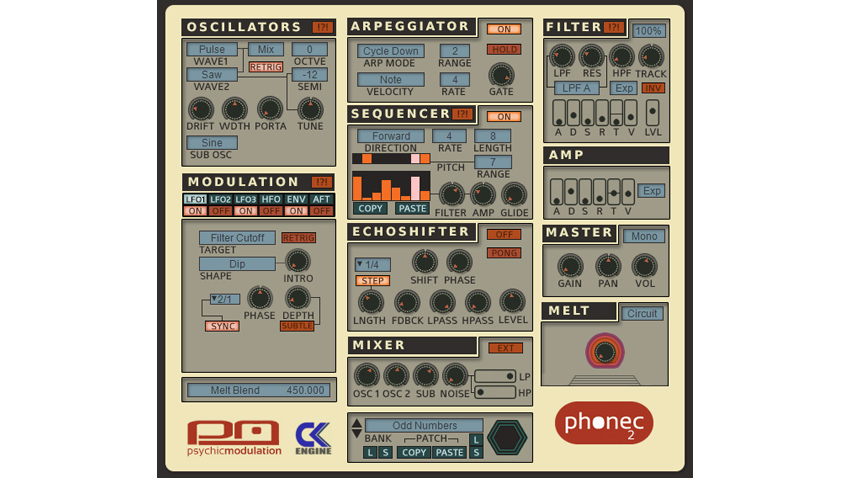Do you like old VHS video intro logos? Then try the Phonec 2 plugin synth
Inspiration comes from the strangest places…

Great art can be inspired by many different things - people, places, books, paintings etc - but we dare say that Psychic Modulation's Phonec was the first soft synth to be born out of a love of "the mystique of video logos you hear at the beginning of worn out VHS tapes".
We're not sure we even quite know what that means, but now we have version 2, which runs on Mac and PC in 32/64-bit VST/AU formats and offers all the features of the original plus a few more besides.
We're told that Phonec 2 specialises in "vintage analogue tones, lo-fi synthscapes, ethereal pads, minimal techno sequences and synthwave leads and basses".
A spec list is below, and you can find out more, download a demo and buy Phonec 2 for $59 on the Psychic Modulation website.
Phonec 2 features
- Dual Oscillators that can be combined in unique ways
- Various oscillator combinations: Mix, Sync, Ring, X-wave, logic
- Sub Oscillator for beefing up the low end
- Analog-style oscillator drifting
- 2-stage lowpass filter plus 1-pole highpass
- Melt: A unique feature that adds instant character to any patch
- Arpeggiator (synced to host)
- Modulation Sequencer
- 3 LFOs (2 monophonic, 1 polyphonic)
- HFO (High Frequency Oscillator)
- Various modulation types: AM, PM, FM, Filter FM
- 2 Modulation Envelopes
- Aftertouch control of several parameters
- Echoshifter: Pitchshifting Dub Delay Unit
- External Audio Processing
- MIDI Learn and automation of any parameter
- Patch Randomization
- Double Click Parameter Reset
- Intuitive patch management system
- Default bank of 128 patches
Want all the hottest music and gear news, reviews, deals, features and more, direct to your inbox? Sign up here.



I’m the Deputy Editor of MusicRadar, having worked on the site since its launch in 2007. I previously spent eight years working on our sister magazine, Computer Music. I’ve been playing the piano, gigging in bands and failing to finish tracks at home for more than 30 years, 24 of which I’ve also spent writing about music and the ever-changing technology used to make it.